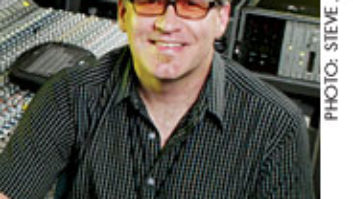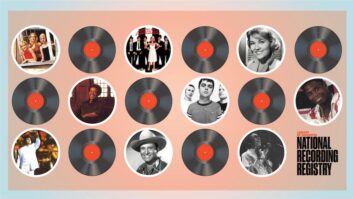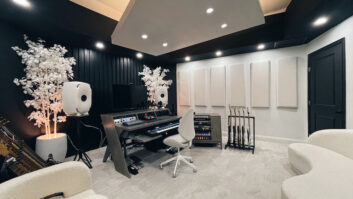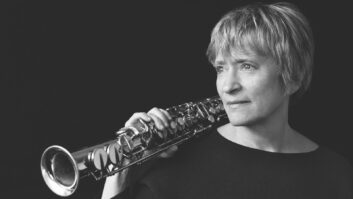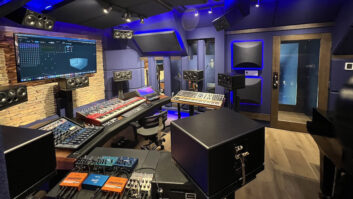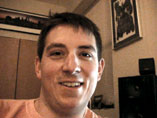
“I take a stereo matrix feed from the console, preferably Midas, and run it into a pair of channels on the Allen & Heath 14:4 Mix Wizard. I believe subgroups are the key to a balanced-sounding live recording. I start by assigning a healthy dose of the L/R mix to the matrix, but then fine-tune with subgroups. I do not assign the subgroups to the house, only the recording. That way, when I find I need a little more drums to tape, for example, I can boost them without crushing the house mix. If vocals seem to be excessively hot going to tape, I will increase the entire band behind them to even and smooth things out.
“Once I’m happy with the direct soundboard mix, I mix in a pair of microphones at front of house, usually Schoeps with 4V capsules, using another two channels on the Mix Wizard. I then send the soundboard feed to the delay unit using pre-fader aux sends and return it to another pair of channels on the mixer. I then time-align the soundboard feed with the mic feed to ensure a tight fit using Smaart, SpectraFoo or, more typically, by ear.
“I then put additional microphones onstage for crowd/stage ambience. Microphone choice and placement depend on venue size, sonic characteristics, FOH position and about a dozen other factors. For example, the Neumann dummy head works exceptionally well in many venues, but not all. Some spaces call for very directional hypercardioid mics, while others sound great using a wide omni pattern. The Focusrite compressor is inserted on the crowd mics, sidechained off the soundboard feed so that they’ll remain squashed while the band is at a louder dynamic but open during lulls in the music to allow applause to cut through.
“Finally, I have just started to run the entire mix through the TC Finalizer to give it a mastered, more professional sound. The resulting 2-track mix goes to DAT and CD-R, which I track in real time.
“That is the basic setup, but it varies almost nightly in small nuanced ways: a different mic here, different placement there, varying EQ and compression details and so forth. I try to capitalize on the pros of each individual venue while minimizing the cons.”
